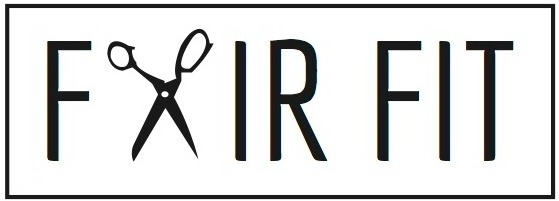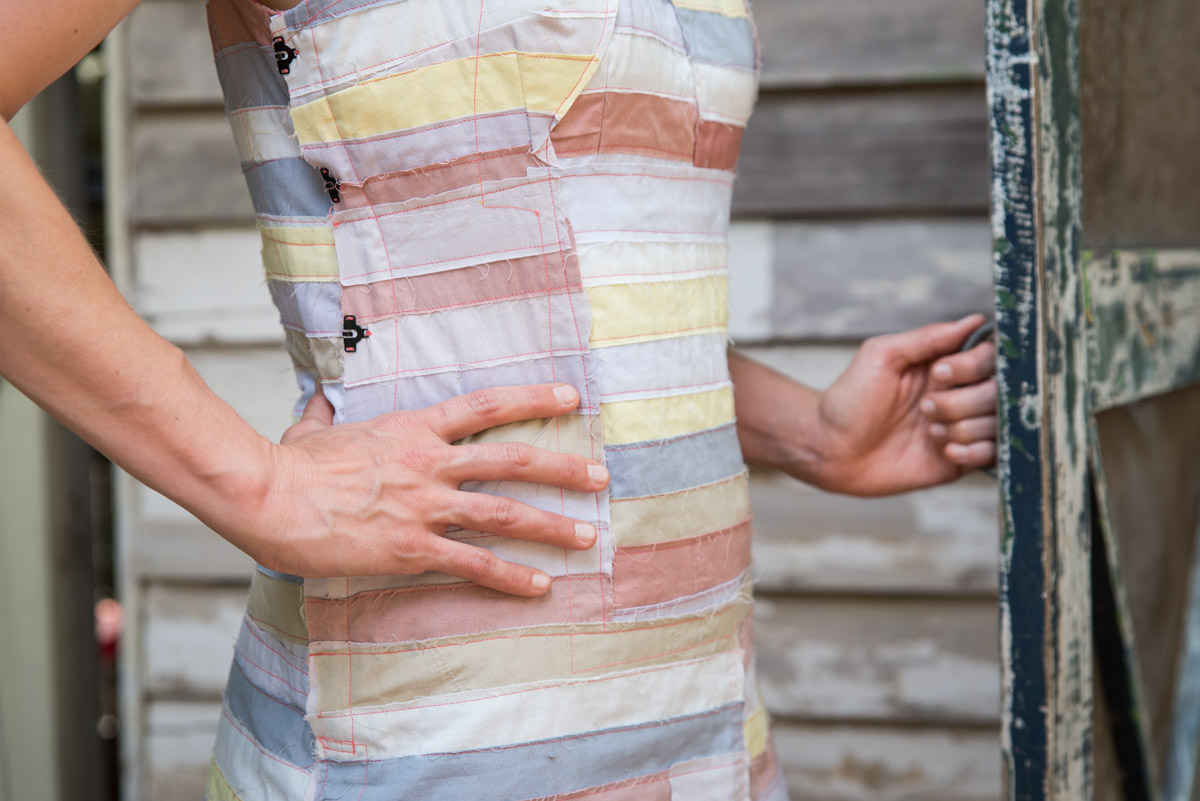Learn and Make the Fair Fit Dress - Using the Fair Fit Pattern to Understand Fit and Create Design Customization
As I've been writing since the beginning of 2017 with this series, I’ve been working on a special project the last year to develop my Fair Fit Pattern into a teaching tool to help home sewers to learn more about fit, draping, and customizing a self sewn garment. The pattern was originally the base pattern that I have used for my previous fashion collections and runway shows, but over the last year and a half as I have been teaching more advanced fashion design classes, I have seen how the techniques involved in making this dress can be used to help others advance in their knowledge and practice of design and customization.
Today I wanted to share with you more ideas and methods that I share when using the patterns in the online classes. I designed the Fair Fit Method courses to be a gateway curriculum to learning more about fashion design and customization, and I hope the students who take the course will be able to approach it from a multitude of perspectives.
The pattern pieces are designed and graded in such a way that you they are more adaptive to customization. You aren't going to sew up a project and pray that it fits, rather you get to make edits throughout the draping process while considering what’s most comfortable and flattering to you. There's no notches, or traditional methods of determining where the seams are located, rather, the pattern is draped and aligned on a dress form to your shape and proportions.
That’s why it’s fair- you get a say in how it's made, and get to learn the process, instead of a designer assigning how your clothes should look and feel. You are working within a specific perspective, with room for adaption and customization, but the process of learning is also specific enough that you aren't going totally rogue and left to fend for yourself. The courses are taught on video that includes tutorials into sewing, design, and pattern customizations to help you create different looks with the pattern sets.
By creating choice and the chance to customize, my desire is that the Fair Fit Method courses will teach garment sewists the creative thinking skills of a designer, and get to grow and impact their practice of garment sewing more deeply by incorporating a can do spirit and playfulness of problem solving while making a garment. The courses not only teach a unique set of patterns and artistic sewing techniques, conceptual sewing applications with unusual twists, but the process of making the garments teaches the student how to drape for their own body.
the pattern is adaptive
It’s a gateway pattern into design and customization and will challenge the sewer to break outside the normal process of construction and into a more independent approach. Each class and project process is described in a series of video, powerpoints, workbooks, and pattern sets- so it will be a step by step walk through from cut to sew. The video lessons will cover the process of fitting and draping, as well as offer you alterations and customizations to make it more your own.
If you are interested in taking courses in the Fair Fit Method, the next opportunity to enroll begins April 2018. You can visit https://www.fairfitmethod.com/ to learn more and read all about the program and full curriculum. If you want to know right away when enrollment opens again, click the button below and you will receive email updates, articles, and notifications when registration begins.
What I want to be very clear that I don't believe in perfect fit or perfect sewing. What I want to share and help others achieve to provide exercises and pathways to adapt the pattern, practice new ways of sewing, and approach customization from a place of trial and error, while learning the patience and clarity that gained with iterative garment design and construction.
Can a Beginner Make this Dress?
In our last in person workshop, people who started sewing with me in January 2017 starting with Beginners Sewing made the top. And guess what? They all finished it, and happily sewed it without confusion. It was because they had not built up barriers or thought forms as to how or why they could potentially fail- they just approached it as another learning endeavor and project that they would take one step at a time.
Here's a post of Shells Karle, in her top. I'm so proud of her, because when Shells started with me in January, she was afraid of her machine. But by working through the steps one at a time, Shells was able to drape for the first time, and sew seams in a whole new way, without worrying if it was the right way. Here's her very first version of the top.
Shells was brave to try something so different as a way to grow in her sewing. And as I share with my students, it's a good idea to make everything twice, and I hope with a second iteration that she will be able to perfect her skills, fit, and draping as she develops the muscle memory and coordination skills that the pattern makes you practice.
The Raw Edges
Some folks aren't that into the raw edges that the original dress features. In the class dashboard, you are shown sewing variations so you can achieve a more clean edge finish, or play more with the stitching and surface design. The dress can be sewn with completely clean finishings, you just have to dedicate a little more time to sew it and those instructions are in the dashboard.
However, what I have seen with the students in the original workshop who weren't keen on the raw finishings is that they end up getting into it. My friend Jenny Hall of Seamingly Smitten Patterns was one of the first students to make the dress in our first workshop this February. Jenny says since its so unusual and out of the norm of how she usually dresses, she gets a kick out of wearing the raw finished version because of its edginess- Here's a pic of Jenny's finished dress made of Robert Kaufman Cotton Lawn and sewn with raw finishings:
I wanted to get you some pictures of the dress, so you can see what actual sewists do with it! I hope this was helpful and of course let me know if you have more questions. Don't forget to sign up to be notified when the course opens :)



















